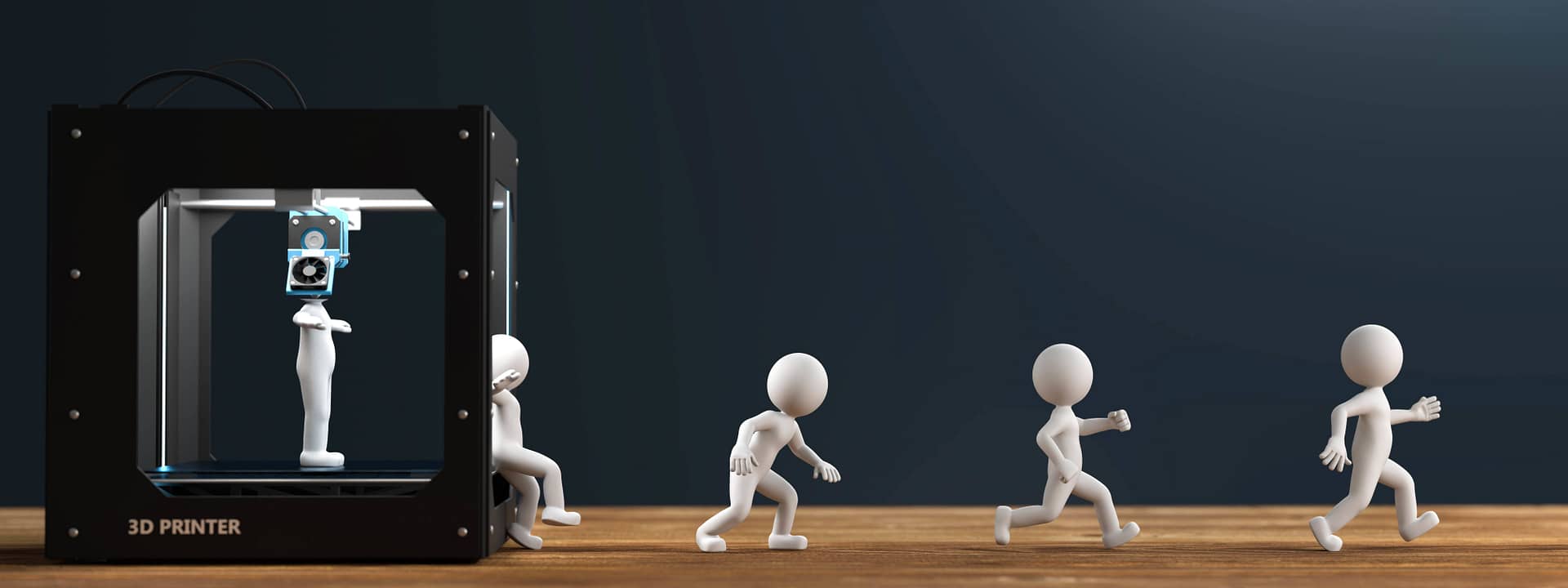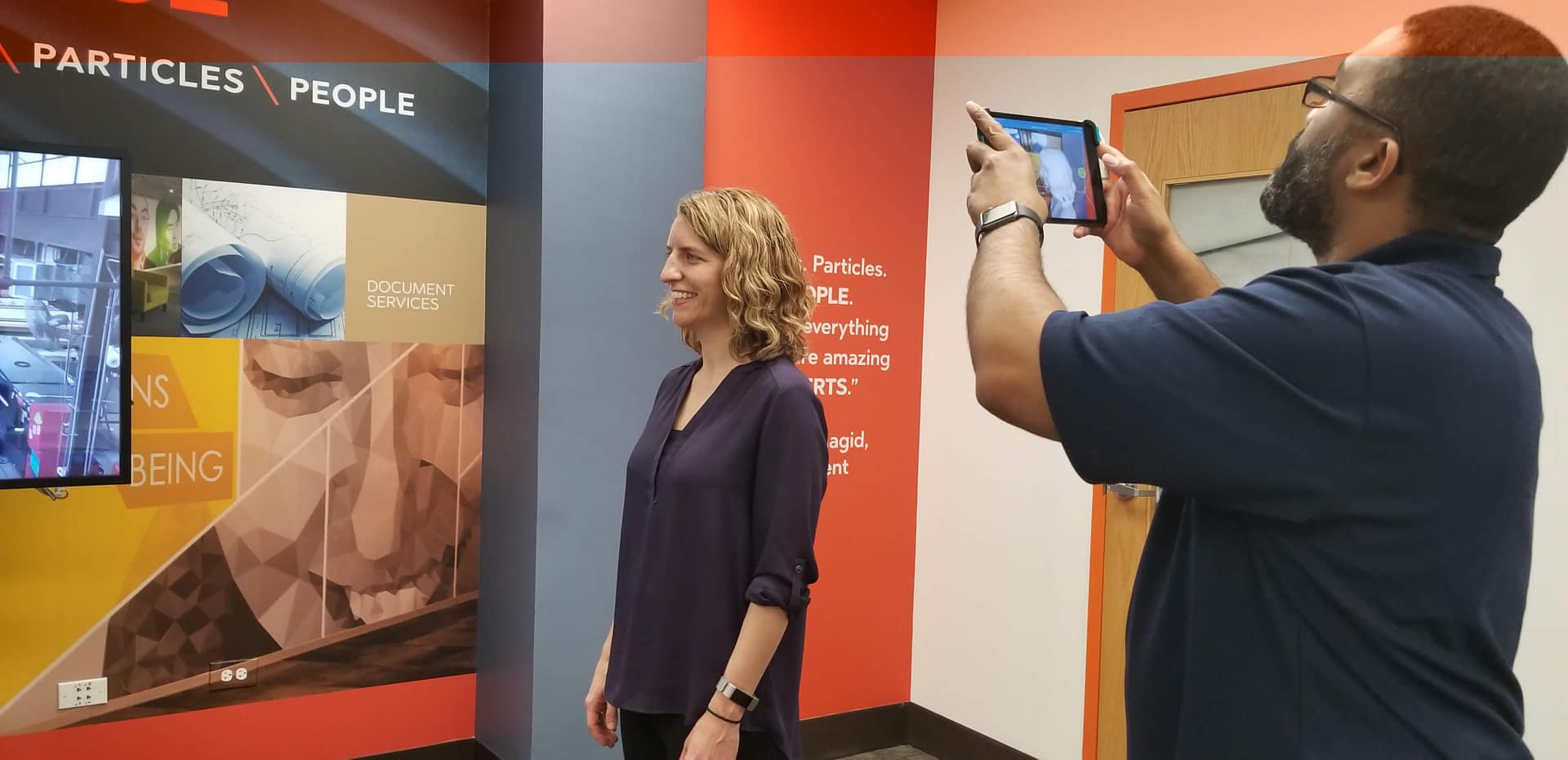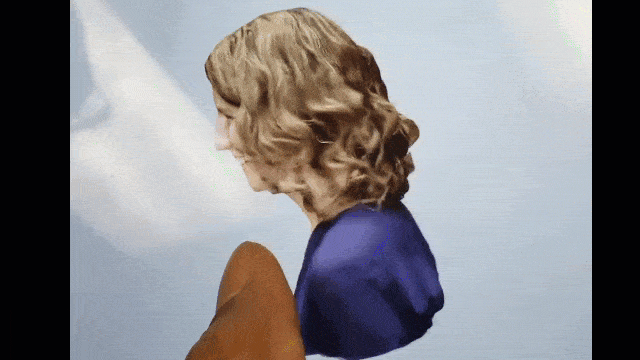By Julie Maggos, SEGD, LEED AP | Senior Director of Experiential Graphic Design

The Society for Environmental Graphic Design in Chicago, of which I am co-chair, recently hosted an event to explore 3D graphics at BluEdge, an innovative printing and information management technologies firm. About 30 chapter members were in attendance to check-out BluEdge’s capabilities, lured by the promise of a 3D scan of each attendee to be followed by a tangible bust (a 3D selfie).

How Does 3D Scanning Work?
The 3D scanning was quick and easy. I was expecting to step into some sort of chamber or lie on a bed as you would for an MRI, but the scan was done by someone who walked around each of us holding up an IPad, and it took about 30 seconds tops. It’s incredible how simple it was. A few minutes later, a 3D image of me (called a .STL file) was available to spin around and review on the iPad.

This is the file that BluEdge sent to the 3D printer to create mini-me. If I had a 3D printer at home, I could use the data to make my own selfies. Imagine the army I could make…
Is 3D Scanning Relevant to the Design of Spaces?
In terms of relevance to our industry, it is becoming commonplace for architecture firms to utilize 3D printers to create models of buildings or spaces. But I started thinking about how 3D printing could help solve some problems in the realm of experiential graphics. After discovering how advanced the scanning and printing techniques have become in recent years, here are some ideas about how we might integrate it into our processes and projects.
The 3D Scanning of Spaces
The scanners are simple (just an iPad!), and the process is fast. To create a model of an existing building or area, instead of measuring each surface by hand and taking a day to draw it in Revit, a 3D scan would give us the details we need to understand the space much faster. The scanner could even be attached to a drone so that very tall structures could be scanned as well.
3D Scanning and Printing of Replica Objects
If there was any existing object—say, an artifact that was fragile or priceless—scanning it and printing it in 3D to recreate it for display would be an easy way to protect the original.
3D Printing of Objects for Display
We recently had the opportunity to work for a pharmaceutical company that wanted to display its chemical compounds on the walls of their conference center. It would be inexpensive and straightforward to fabricate those molecules with 3D printing and create a visually engaging and dimensional display. Size is a limiting factor—the 3D printing beds we saw max out at 25 x 40 x 25 inches—but combining multiple small objects to make a more prominent display is a possibility. And there are printers 10 feet long or larger. It’s really unlimited according to the printer.
3D Printing ADA Signage
This one could be a real game-changer for the signage industry. ADA compliant signage today is typically made by pressing little braille beads into a sign plaque and gluing tactile lettering onto the plaque face. It is a time-consuming process, and unfortunately, the braille beads and text can detach from the plaque over time. Alternatively, 3D printers could make the entire sign plaque integral with text and braille, because it is all printed in one piece. Since 3D printing can be full color, following ADA guidelines for visual contrast and color would be possible without even having to paint or finish the sign plaques after they’ve been 3D-printed.
The 3D Printing of Interlaced Objects
The sharpness and detail of the products available through 3D printing allows for a very intricate end result. And because 3D printing involves additive, rather than subtractive, manufacturing, it has an advantage over other techniques like CNC routing (a computer-controlled cutting machine for hard materials), waterjet cutting, or laser cutting. Printing with 3D starts from the "ground up" and therefore allows for interlocking or interwoven pieces to be crafted as one piece. We had a recent client who's logo was meant to look like ribbons woven together, and it had always been reproduced as a 2D image. With the power of 3D printing, we could design it as a 3-dimensional sign woven together as though it defied the laws of physics.
The Takeaway
Although these ideas may prove impractical, the techniques of 3D scanning and printing do, in fact, have benefits for our industry and may have a real impact on the world of interior architecture, experiential graphics, and signage design in the near future. IA’s Design Intelligence team is already utilizing 3D scanning technology from organizations like Leica Geosystems (a more advanced technology than what is available on any iPad) to create exact 3D models to aid our teams in the design of spaces, and explorations like our time with BluEdge are making clear the myriad opportunities that exist for incorporating 3D Printing into our designs.

